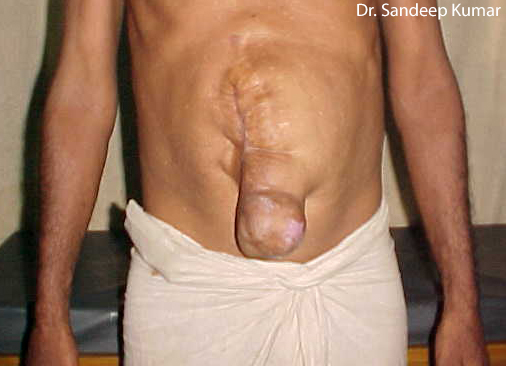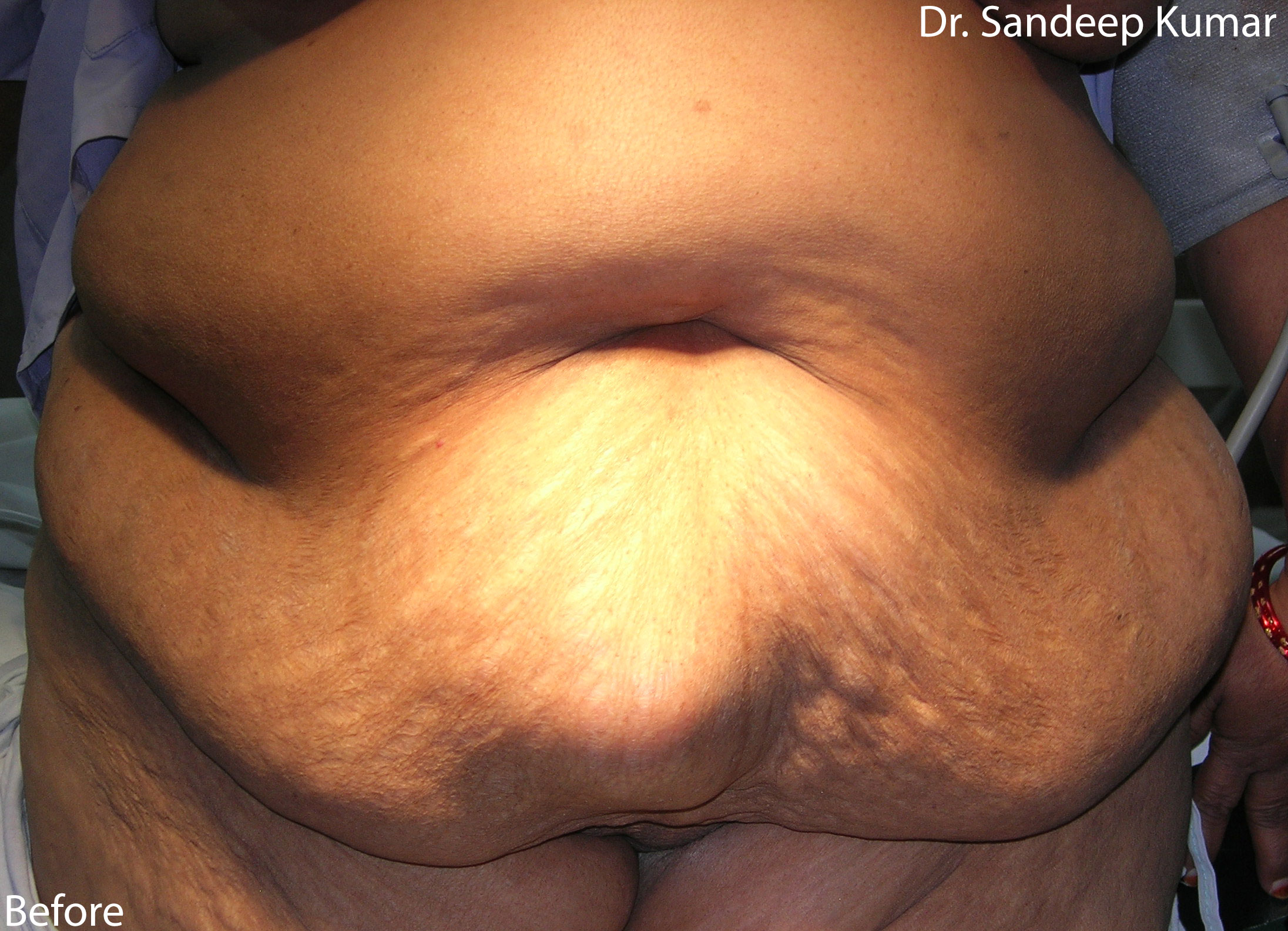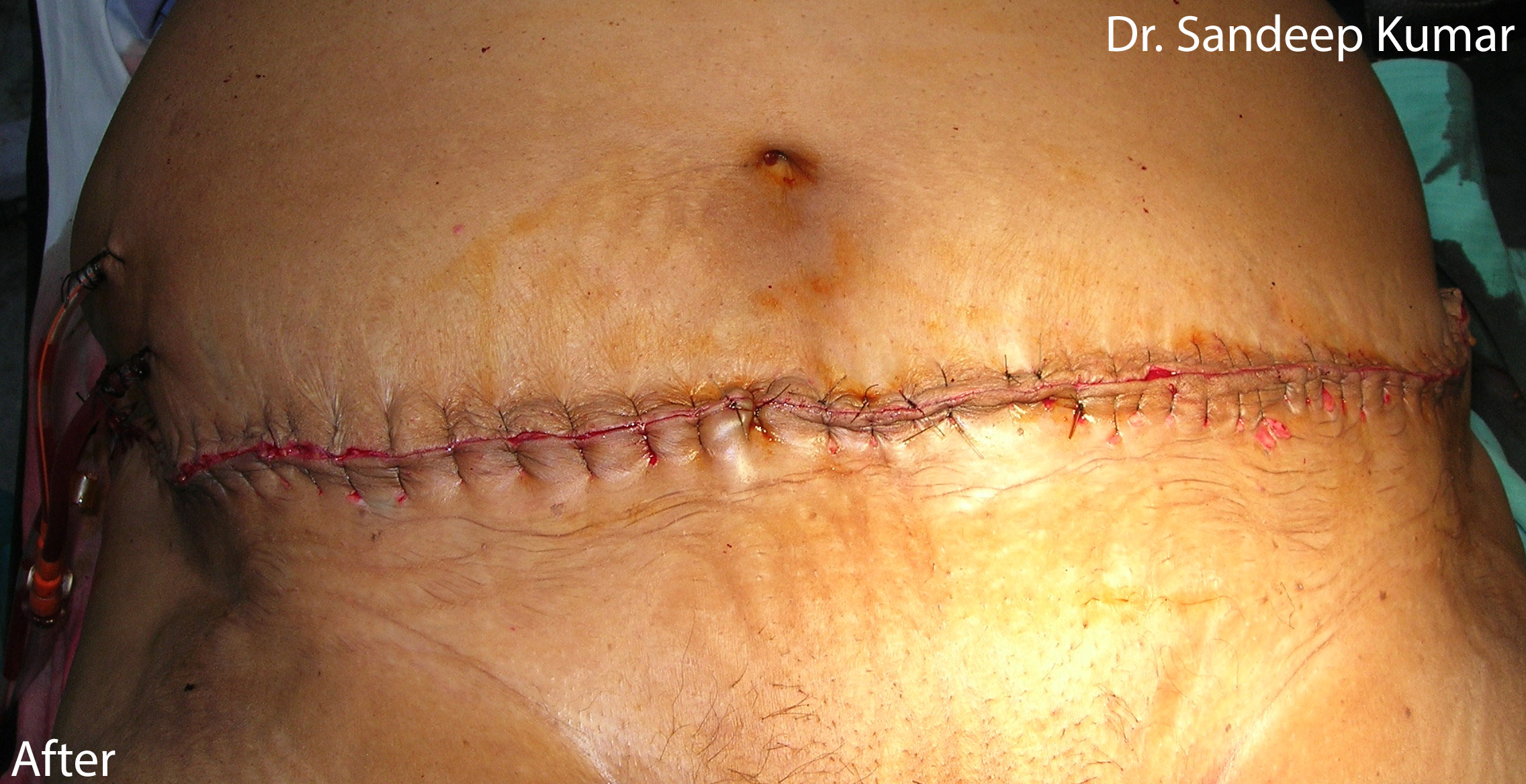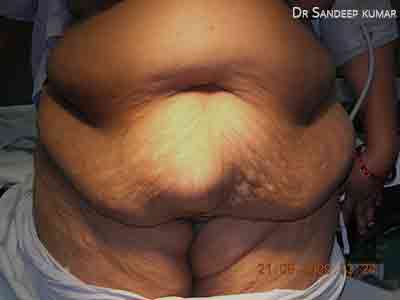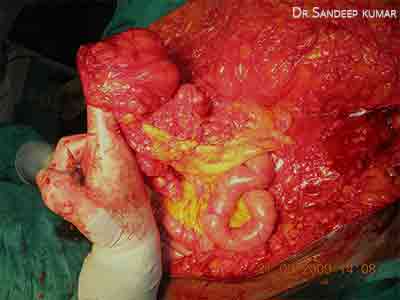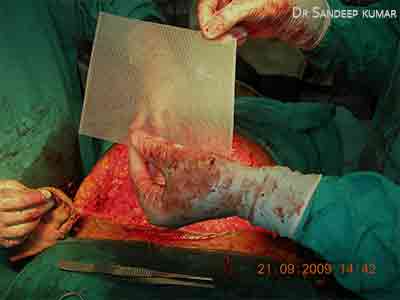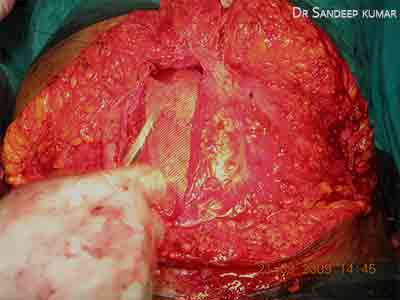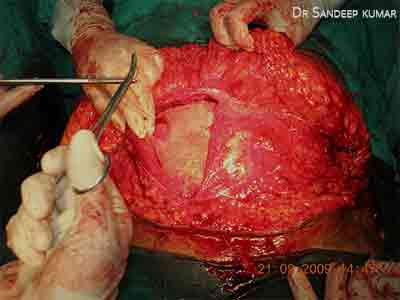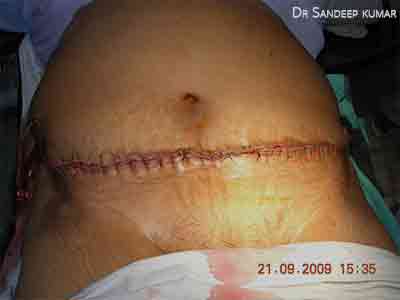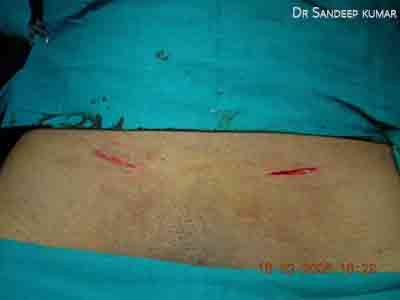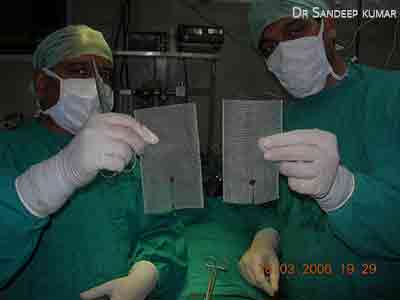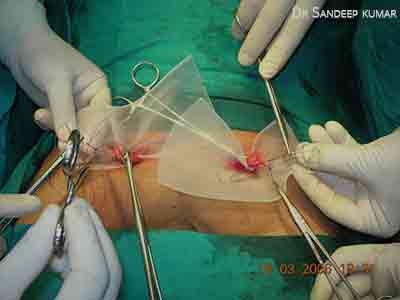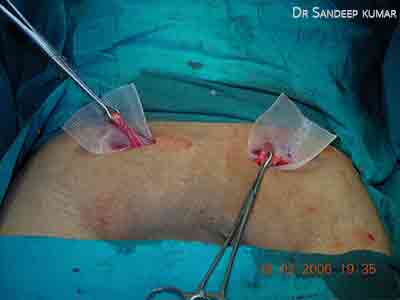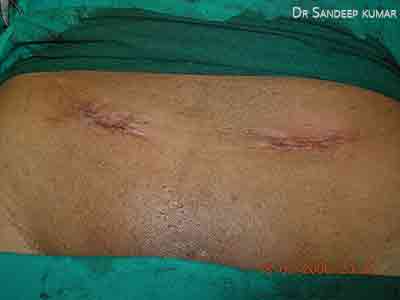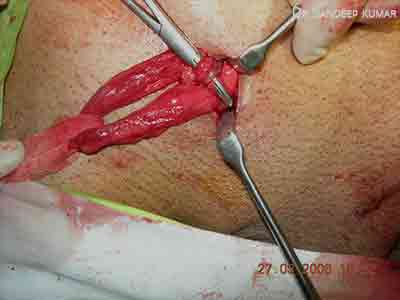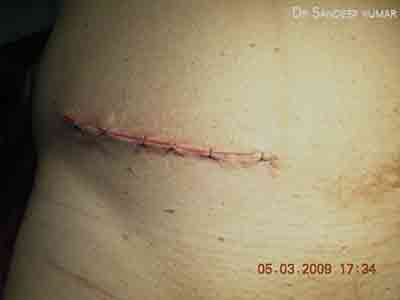Dr Sandeep Kumar’s Clinic offers best surgery services for Hernia Surgery in Lucknow.
 A hernia is the protrusion of an organ or viscera through the wall of the cavity like abdomen that contains it. The commonest hernia occurs in men in groin region known as inguinal hernia. The 2nd common hernia is called ventral hernia that occurs usually after a surgical operation on abdomen, where a weakness in the abdominal wall eventually forms a hole, through which fatty tissue or organs protrude. Abdominal hernia or abnormal swelling in the abdomen near or around the umbilicus or after caesarian operation is common in women. Sometimes obese men also get umbilical or para-umblical hernia. A hiatus hernia comes out into the chest cavity via a hole in the diaphragm. Various common hernia are shown in this figure;
A hernia is the protrusion of an organ or viscera through the wall of the cavity like abdomen that contains it. The commonest hernia occurs in men in groin region known as inguinal hernia. The 2nd common hernia is called ventral hernia that occurs usually after a surgical operation on abdomen, where a weakness in the abdominal wall eventually forms a hole, through which fatty tissue or organs protrude. Abdominal hernia or abnormal swelling in the abdomen near or around the umbilicus or after caesarian operation is common in women. Sometimes obese men also get umbilical or para-umblical hernia. A hiatus hernia comes out into the chest cavity via a hole in the diaphragm. Various common hernia are shown in this figure;
Symptoms
Symptoms may be just a painless swelling or protrusion or a lump. There may be some pain because of pinch or pressure on the organ that passes out of abdominal cavity. It can return back to abdominal cavity and then the pain eases called Reducible hernia. When this becomes stuck the swelling becomes irreducible known as Irreducible hernia. Fatty tissue usually enters a hernia first, along with or followed by the organ. In some cases, symptoms such as severe pain, tenderness in the abdomen, vomiting, difficulty in passing flatus and stools may develop. This means that the blood supply to an organ or a piece of tissue trapped by the hernia has been restricted. This is referred to as strangulation. A piece of herniated bowel may also be causing an obstruction and preventing the bowel contents form moving through it.
Who is affected?
Hernia especially in the groin of men and rarely in women known as inguinal hernia are due to weakness of the abdominal wall present since birth. Some of the factors that may heighten the tendency of hernia formation are; not lifting heavy weights correctly, hard coughing and smoking, incorrect posture or blows to the abdomen, conditions that increase pressure in the abdominal cavity such as obesity, constipation, chronic lung disease and fluid in the abdomen (ascites), muscle weakness due to operations or trauma and poor nutrition
How diagnosis is made?
Clinical assessment almost always makes a diagnosis of hernia. Ultrasound scan and occasionally other imaging techniques such as CT / MRI scans may be required. Tests of general fitness are done for surgery.
Abdominal hernia or abnormal swelling in the abdomen near or around the umbilicus or after caesarian operation is common in women. Sometimes obese men also get umbilical or para-umblical hernia
Abdominal hernia also occurs after abdominal surgery if the wound gives way on account of infection or excessive pressure from inside like too much coughing post operatively.
Our clinic has a very large experience in treating this problem. We generally treat this condition by open surgery. Most of the defects are very large. Most hernia are associated with large extra sagging abdominal skin or abdominal apron sometimes hanging up to thigh. We prefer to excise this and the women feel happy for their hernia is repaired and they also get a tummy tuck. Repair is done tension free taking care that abdominal contents are not under forceful closure (abdominal compartment syndrome)
Treatment
There is no medical treatment of hernia. We do not prescribe abdominal belts or binders except in exceptional situations. Some hernias can be left untreated for example in elderly asymptomatic and unlikely to get complicated hernias. Some hernias are operated in emergency if, obstructed or strangulated.
Our clinic takes special pride in treating all types of hernias including rare hernias. All types of hernia surgery are done by us with extreme caution, due consideration of age, expectations, cost, functional and cosmetic outcomes. Ventral hernia surgery can be combined with cosmetic corrections of flabby abdomen as can be seen in some pictures
We have a large experience in treating this problem. Most of the defects are very large. Most hernias are associated with large extra sagging abdominal skin or abdominal apron sometimes hanging up to thigh. We prefer to excise this and the women feel happy for their hernia is repaired and they also get a tummy tuck. Repair is done tension free taking care that abdominal contents are not under forceful closure (abdominal compartment syndrome). Ours is very low recurrence rate and less post-operative pain with early return to work.

